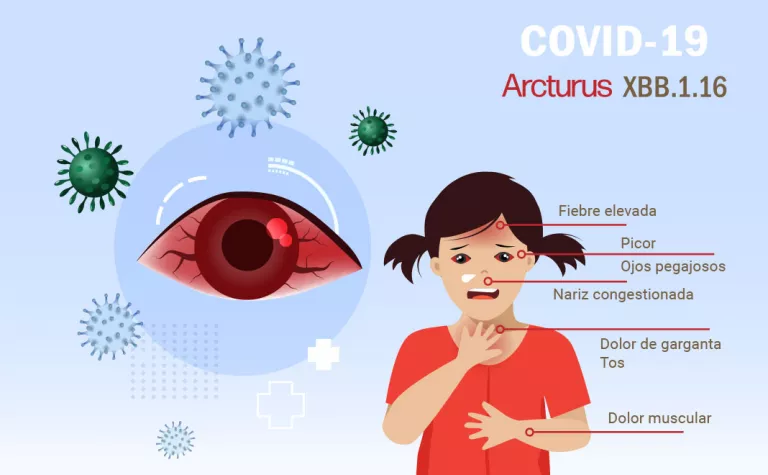Arcturus or XBB.1.16 is a new variant of the SARS-CoV-2 coronavirus in which two other subvariants of the omicron variant have been combined, which have already been detected in at least 33 countries and have caused an increase in COVID-19 cases. 19 in India, the United States, Singapore, Australia, Canada, Japan and the United Kingdom, among others.
The World Health Organization (WHO) is monitoring this strain – which has been circulating since January 9, and under surveillance since March 22 – considering that arcturus is the most transmissible variant to date, although it has indicated in a report that it has not been observed to cause more severe symptoms in those infected: “So far, reports do not indicate an increase in hospitalizations, ICU admissions, or deaths due to XBB.1.16.” As of April 17 XBB.1.16 has been designated as a variant of interest. And the epidemiologist Maria Van Kerkhove, has detailed that “Immune escape and growth advantages are observed for XBB.1.16, even in countries where XBB.1.5 has recently become dominant. No changes in severity have been reported and it can cause a wide range of diseases. We have to be vigilant.”
Experts have explained that Arcturus – which is also the name of an orange giant star close to the constellations Ursa Major and Ursa Minor – presents an additional mutation in the spike protein of the coronavirus that, when analyzed in the laboratory, shows a greater infectivity and a potential increase in pathogenicity that differentiates it from other omicron subvariants – of which there are more than 600 currently circulating – and that makes it highly contagious.

Arcturus symptoms and how it affects children
The most common symptoms of this new subvariant of omicron are similar to those of the flu, such as high fever, sore throat, cough and runny nose, but to these are added conjunctivitis accompanied by itching, something that had not been detected in waves of Previous COVID.
In addition, it seems that it especially affects children, as you explained in your Twitter account Dr. Vipin Vashishtha, a pediatrician and member of the WHO’s Vaccine Safety Net Project (VSN), who has commented that a “childhood phenotype” of the variant appears to be emerging, and that pediatric COVID cases have increased in India for the first time in six months , as detailed in a preliminary study. This specialist warned that “During the last 2 days, I have begun to receive pediatric cases of Covid once again after a lapse of 6 months. An infantile phenotype appears to be emerging: babies treated with high fever, cold and cough, and non-purulent itchy conjunctivitis with sticky eyes, not seen in previous waves.”
Conjunctivitis is an eye infection characterized by eye redness and swelling, itching, tearing, and conjunctival discharge, and although it is one of the possible symptoms of COVID, it was rare. Now, however, it is quite common for children infected with this variant of the virus to have red, sticky eyes.
Those most affected are children under 12 years of age, as highlighted by The Times of India newspaper, in which they also talk about another infection due to an adenovirus similar to SARS-CoV-2 that has caused an increase in hospitalizations of young children ( under two years old). Doctors have warned that in these cases it is difficult to distinguish a cold from COVID or adenovirus infection, and that an antigen test is necessary to know the diagnosis.
.













